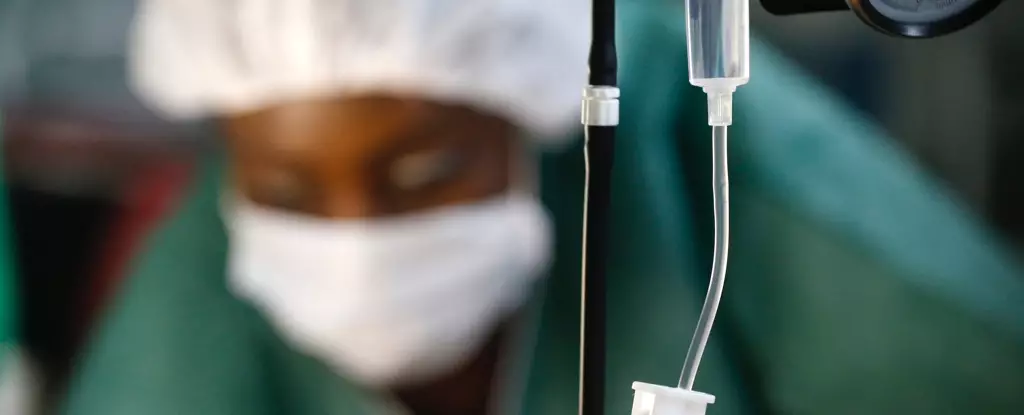In recent weeks, the Democratic Republic of Congo (DRC) has become the epicenter of crisis following a mysterious disease outbreak that has claimed the lives of between 67 and 143 individuals in just two weeks, primarily affecting women and children. Presenting with flu-like symptoms—fever, headache, cough, and anemia—the disease has sparked immediate concerns among local health officials who are now racing against time to uncover its origin. Given the DRC’s historical struggles with various endemic ailments, including malaria and dengue, the current situation has raised alarming questions about both the immediate health threat and the broader implications for disease surveillance in low-income settings.
Diagnostic Challenges in Developing Regions
The quest to identify this enigmatic disease faces multiple hurdles. One significant challenge lies in the limitations of the diagnostic testing infrastructure within the DRC, which is woefully under-equipped to handle rare or novel pathogens. Many clinical laboratories in the region can test only for common diseases, significantly impairing the ability to conduct thorough investigations into newly emerging infections. Furthermore, difficulties with the collection and transport of biological samples complicate the situation further, with samples often needing to be sent abroad for validation.
Adding to this challenge is the controversial nature of international sharing of biological samples, which raises issues over fair benefit sharing among nations. These complications can delay not only the understanding of the outbreak’s cause but also the development of effective public health responses.
Assessing the Impact: The Scope of the Outbreak
While the mortality rate from this mysterious disease is already alarming, gaining a comprehensive picture of its reach poses yet another challenge. In the DRC, many individuals do not seek medical care for various reasons, including lack of access to healthcare facilities, which can be sparse and understaffed, particularly in remote areas. With a ratio of fewer than two doctors per 10,000 individuals, the chances of infected patients receiving timely diagnoses and reporting to health authorities diminish significantly.
Moreover, even if patients do seek help, not all cases of infection are recognized or reported, creating gaps in the data. The existing system’s inability to capture every instance of the disease skews the understanding of its severity—essentially masking the reality of an outbreak that could be far more significant than the reported numbers suggest.
This current outbreak is symptomatic of a larger issue: the increasing frequency of new infectious diseases that emerge as a consequence of various drivers such as climate change, urbanization, and environmental degradation. The spillover of pathogens from animals to humans has become an urgent concern worldwide, and the global system for monitoring infectious diseases is, at best, fragmented.
In many low-income countries, the inadequacies in disease surveillance have been long-standing, resulting in diseases going undetected or diagnosed too late. Issues such as insufficient resources, lack of staff training, and non-standardized reporting further escalate the risks associated with potential pandemics.
Innovative Initiatives for Enhanced Surveillance
Amidst this landscape, several initiatives have emerged aiming to enhance disease surveillance systems. For instance, the World Health Organization’s (WHO) 7-1-7 initiative sets ambitious targets for the rapid detection and response to infectious disease outbreaks. Though well-intentioned, the effectiveness of such benchmarks remains uncertain, especially for fast-moving infections that may proliferate before any formal response can be initiated.
Another strategy, Integrated Disease Surveillance and Response (IDSR), aims to consolidate existing surveillance processes across different sectors—human health, animal health, and environmental health. Initiated primarily in Africa, the IDSR has reported mixed success due to technological setbacks and data-sharing challenges, highlighting the complexities faced in executing coordinated surveillance.
Furthermore, collaborations such as the International Pathogen Surveillance Network illustrate a growing recognition of the need for collective action to enhance disease monitoring. These initiatives hope to bridge existing gaps, yet their long-term viability and effectiveness are yet to be determined.
As we observe this evolving situation in the Democratic Republic of Congo, it becomes increasingly evident that immediate and coordinated efforts are essential to address not only the current outbreak but also to fortify global preparedness for future pandemics. Enhancing disease surveillance and developing robust infrastructures in resource-poor settings is not merely a local priority but a fundamental global necessity. Without these developments, the threat of emerging infectious diseases remains perilously close to becoming an uncontrollable global crisis. Addressing these challenges requires innovative solutions, commitment to international collaboration, and urgent investment in healthcare infrastructures across all nations.


Leave a Reply